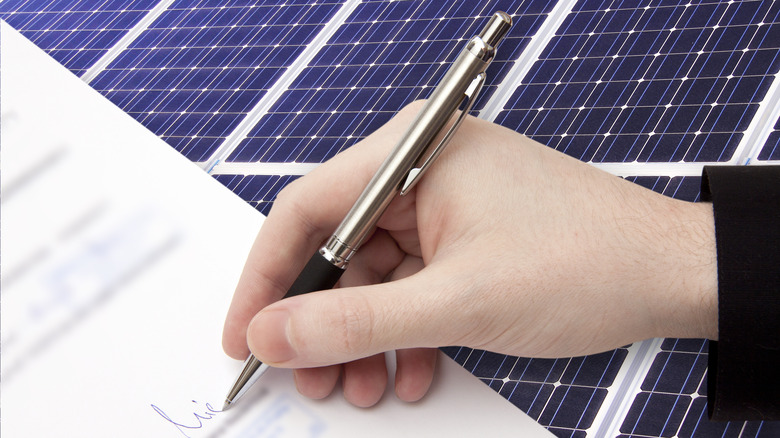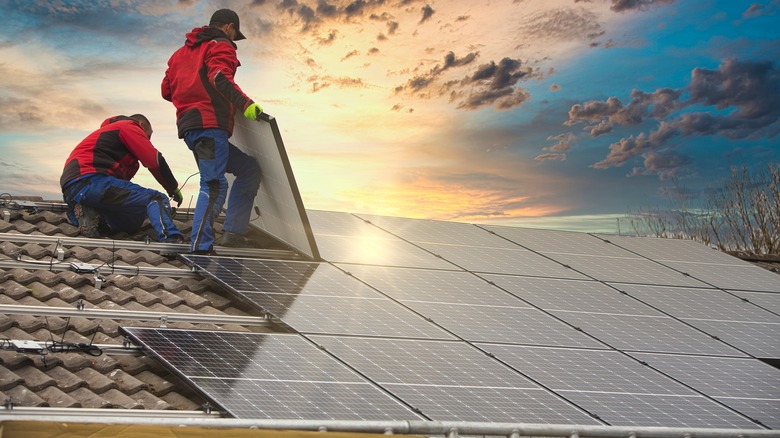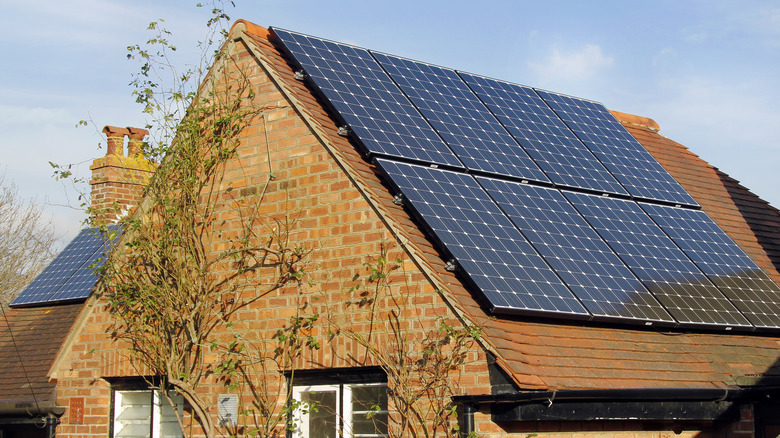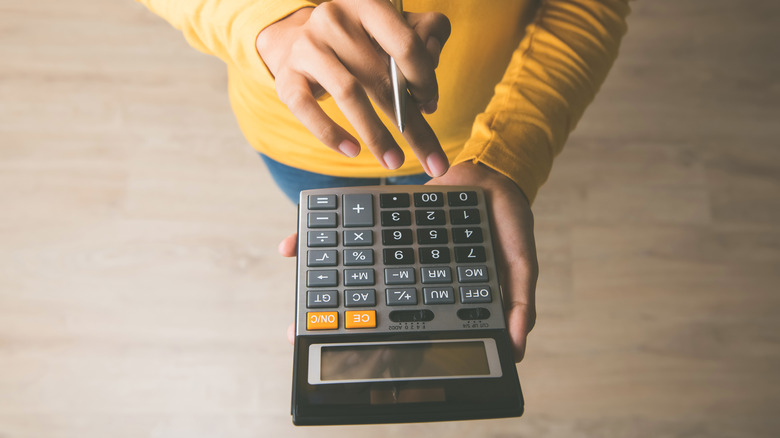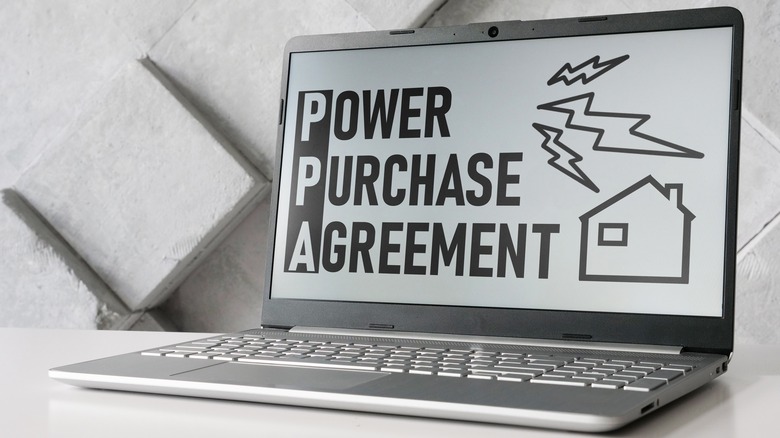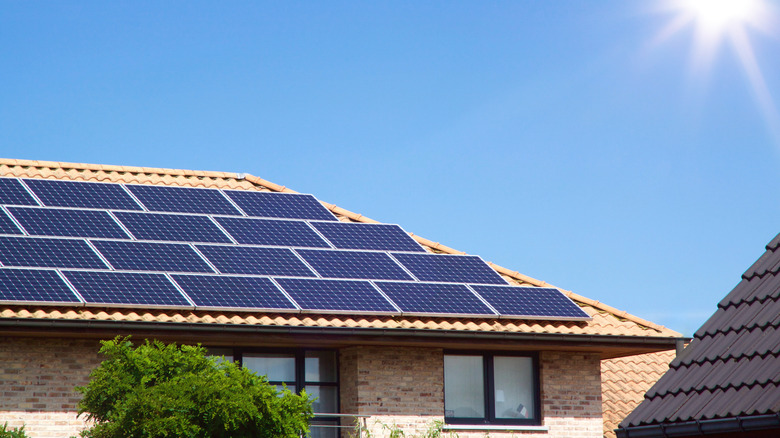How Do Solar Panel Leases Work And What Are The Pros And Cons?
Solar panels are an excellent renewable energy option for homeowners. Not only do they reduce your monthly electric bill, but they can even help you earn additional income from excess solar energy in the form of Solar Renewable Energy Certificates (SRECs).
One of the biggest roadblocks when it comes to solar panel adoption is the upfront cost. Depending on how much solar energy you require and the size of the system, costs can range anywhere between $14,000 and $35,000. There are also other hidden costs of home solar panels, such as maintenance to keep them running effectively. If you're unable to pay for the panels upfront, or are ineligible for a loan, investing in solar panels might not be an option for you.
That's where solar panel leases come in as a convenient alternative. With solar leases, homeowners will pay a fixed monthly amount to a third-party provider to lease the solar panels and get access to the electricity generated by them. While this doesn't result in the kind of savings that come from owning the panels, you'll still benefit from lower utility bills.
How do solar leases work?
When you sign a solar lease, solar panels are installed on your home without you having to pay any upfront fees. The solar panels are owned by the solar company, and you pay them a fixed monthly amount in exchange for access to the electricity generated.
Solar panel leases only make sense if the monthly lease payments are lower than your average electric bill. The solar company will typically offer you a cheaper monthly fee than what you're paying for electricity. Therefore, if you accept, it replaces, and ideally significantly reduces, the cost of your utility bill.
Leases are typically taken for a long period – usually 20 to 25 years – given that solar panels can last for up to 30 years. It's worth noting that solar tax rebates and other credits will not be available to the leaseholder, and will pass on to the solar company instead.
Advantages of solar leases
The main advantage of solar leases is that you can use the solar panels newly installed on your home, and the electricity generated, with zero upfront costs. Solar panels are a significant expense, and might not be worth installing for people who aren't eligible for a loan or don't want to take on the added debt.
Along with installing the panels, the solar company also takes care of any repairs during the lease, so you don't need to monitor them or worry about any maintenance costs. With a solar lease, the panels should generate enough energy to eliminate or significantly lower your electric bill, resulting in savings to your utility bills every month. In addition, there are no hidden charges, since you pay a predetermined fee. Finally, when you sign a solar lease, you'll be powering your home with renewable energy, which is better for the environment.
Disadvantages of solar leases
On the flip side, when you lease solar panels, you don't get access to incentives such as the federal solar tax credit, where you can claim up to 30 percent of the cost of the solar panels as a tax rebate. You can't sell the excess energy generated by the panels either, since this benefit is passed on to the solar company.
With solar leases, you'll never be able to completely stop paying for your electricty, given that you'll have to continue paying the solar company for the duration of the lease. In addition, solar panel leases also come with an escalator clause. Under this, your monthly payments increase every year, usually between 1% and 5%. If the price of your lease goes up but the cost of electricity doesn't, you might end up paying more for the lease than you would for electricity from the grid.
Another major disadvantage of solar leases is that they make homes difficult to sell. A solar lease is based on the homeowner's usage, and might not match the needs of prospective buyers. As a result, you may need to buy out your lease when selling your home, which essentially involves purchasing the solar panels from the provider.
Solar leases vs. Power Purchase Agreements (PPAs)
While solar leases are one way to access solar energy without ownership, there's another option called a Power Purchase Agreement (PPA). Similar to solar leases, with a PPA a solar company will be responsible for installing and maintaining the home solar panels. However, instead of paying a fixed monthly cost, you'll pay only for the energy generated by these panels.
The cost of this energy is less than what you'd pay from the grid, resulting in savings on your utility bills. With a PPA, you don't need to worry about paying the solar company for times the panels generate less electricity, such as during cloudy weather.
It's worth noting that since you only pay for the electricity produced, you might have higher bills in summer and lower bills in winter. As with solar leases, solar companies will be able to take advantage of any credits and incentives from the panels.
Are solar leases worth it?
Over the last decade, the prices of solar panels have dropped by almost 40%, making them far more affordable. With the added incentives like the solar tax credit and SRECs, owning solar panels is a no brainer for those who can afford it. Solar leases made more sense when the cost barrier to purchasing solar panels was higher, but given that solar panel prices are expected to keep falling, entering into a 15 to 20 year lease doesn't make financial sense.
Not only do solar panels pay themselves off after about 10 years, but they also help you earn additional income when you sell excess energy to the grid. Plus, solar panels can increase the value of your home.
If you're eligible for a loan on solar panels, the long-term savings will be significantly greater than leasing. In addition, solar loans will give you the same incentives and rebates that you'd get with paying for the panels upfront. While solar leases are certainly an option for homeowners, they only make sense if you're not eligible for a loan or don't have taxable income.
